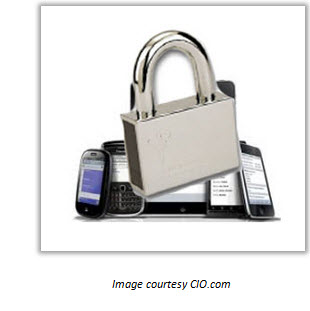Guest post by Edd Nicklin, Director, Tipac, Ltd. This post originally appeared on the Tipac blog.
For banks, building societies and other forms of financial institutions, there is one thing that continually causes a lot of disruption. Paperwork is an essential evil in the world of finance, and something that is required to be completely correct and compliant with over a dozen different rules and regulations. Because the system is so complex, many building societies and banks opt to process paperwork manually to ensure compliance, which consumes a huge amount of resource, time and money. But we are here to tell you that there is another way.

Paperwork Compliance Pain
As with everything in financial institutions, paperwork compliance is heavily regulated. Every single document that is sent out into the world from a bank or building society, be it a piece of promotional literature or a client application, has already gone through a comprehensive series of checks, approvals and sign-offs. This is to ensure that the information contained within is correct, but also to check that the document meets the naming conventions, recording and tracking compliance standards – among many more.
Because of the sheer number of people and processes each document must go through, most of these compliance checks are done manually. This means paper and paper-based processes are one of the single largest expenditures for financial compliance. Each document that must be checked costs the company not only time, but paper, ink, storage space and storage supplies. We explored the cost of manual paperwork processes for a business of 250 people in our whitepaper with quite staggering results. Per month, paperwork use and storage costs a 250-person business £45,510. With most banks and building societies housing many more employees, the costs quickly add up.
Still, the main cost in this compliance process is time – checking over every element of these documents takes a human on average around one hour, and with every outputted document requiring that level of attention, some employees do nothing else. In fact, for a single document to make it through all of the checks needed before publication and distribution in finance, it can take several weeks. This is a phenomenal waste of resource and time, not to mention potentially too slow for time sensitive materials, and something that could easily be solved with the right document management solution.
How Document Automation Can Ease The Burden
The crux of document automation is the ability to pre-program your processes into the computer, allowing it to do most of the work. With completely customizable workflows, you can program in even the most complex of checks to be performed on every document automatically, without a human being involved.
So once you have put a document into the system digitally, it will be taken through your series of compliance checks automatically and filed in the correct place. You can input the compliance essentials such as naming conventions to be checked, and if a document comes up as incorrect it can be flagged for revision. But if it is correct, it will simply be sent through to the next check, and when these are complete it can be stored in a filing system of your choice, ready to be sent out.
Because these processes are performed by a computer and not by a human, the error rate plummets to almost zero, with the ability for people to do manual checks at any stage to ensure the system is working correctly. All automated document workflow solutions come with document tracking built in, making compliance and audit trails simple to follow and automatically generated. Once the documents have been checked and stored, it significantly shortens retrieval times in cases of dispute from several hours to seconds.
For financial institutions, investing in an automated document management solution can result in huge savings on resource, time and manpower, all of which can be re-invested into more valuable areas of the business. Paperwork becomes simple and streamlined, allowing the business to do what it does best.



